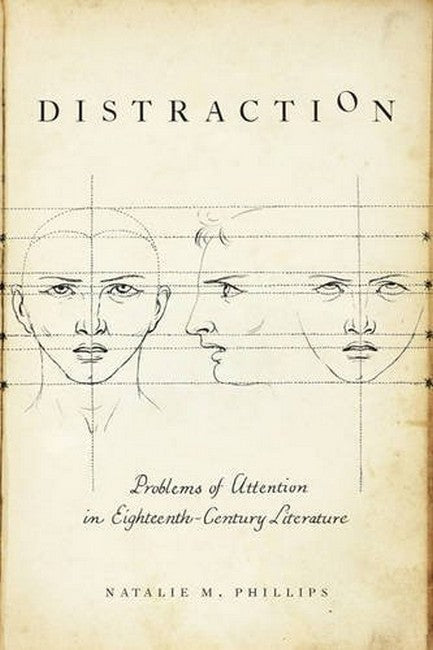Preface
Introduction. The Literary History of Distraction
The Unifocal and the Multifocal
The Rise of the Distracted Character
Attention, Distraction, and Enlightenment Philosophy of Mind
A Swiftly Tilting Madness
Categorizing Distraction
1. Mind Wandering: Forms of Distraction in the Eighteenth-Century Essay
Distraction and the Eighteenth-Century Essay
The Rhetoric of Attention: Appealing to Pathos and Brevitas
The Essay as a Tool of Focus
Training Attention to Attention
Strengthening Focus: Repetition and Dramatic Irony
Economies of Attention
The History of Attention Span
2. Lapses of Concentration: Distracted Vigilance and the Female Mind
Environment and Mind: Urban Diversion and the Distracted Brain
The Problem of a Soft Female Mind
Sex, Environment, and the Multifocal Coquette
The Challenges of Situational Awareness
Philosophizing Multiplicity: Cognitive Bottlenecks and Sorting Gloves
Strained Omniscience and the Distracted Heroine
The Crowded Syntax of Sexual Inattention
""Might as Well Be Passed Over as Read:"" Indulging the Diverted Reader
3. Scattered Attention: Distraction and the Rhythm of Cognitive Overload
Rhythms of Narrative, Rhythms of Mind
The Scattered Rhythms of Cognitive Overload
Susannah and the Vexed Situation of Madam Reader
The Anatomy of Parallel Processing
The Sermon: Asynchronous Rhythms of Prose
Hobbyhorses and the Individual Beat of Interest
Irregular Distraction: The Tempo of Cognitive Overload
Rhythms of the Brain: Creativity and the Timing of Distraction
4. Fixated Attention: The Gothic Pathology of Single-Minded Focus
Microscope and Mind
Scientific Metaphors and the Madness of Attention
The Politics and Poetics of Fixation
Involuntary Attention: A Multifocal Selective Blindness
Sympathy and the Benefits of Distraction
Rewriting Suspense: Interruption and the Gothic Sublime
Fixation and the Science of Obsession
5. Divided Attention: Characterization and Cognitive Richness in Jane Austen
The Power of Multitasking in Pride and Prejudice
The Singular Importance of Inattentive Characters
Mr. Hurst: The Limited Capacity of the Undivided Mind
Mrs. Jenkinson: Narrow Bandwidth and the Creation of Depth
Lydia and Miss Bingley: Caricaturing Cognitive Vacancy
The Dangers of Too Much Attention
Distraction as Liveliness of Mind
Mary Bennet: Hyperfocus and Cognitive Immobility
Lady Catherine de Bourgh: The Problem of Excess Vigilance
Elizabeth Bennet: The Benefits of Diversion
Characterizing Reading: Maps of Distraction and Interest
Coda: History of Mind and Literary Neuroscience
Interdisciplinarity: From Theory to Practice
Literary Attention: An fMRI Study of Reading Jane Austen
The Value of Literary History
Notes
Bibliography
Index

